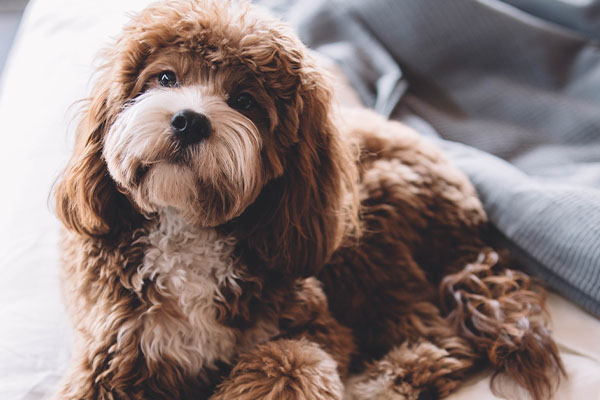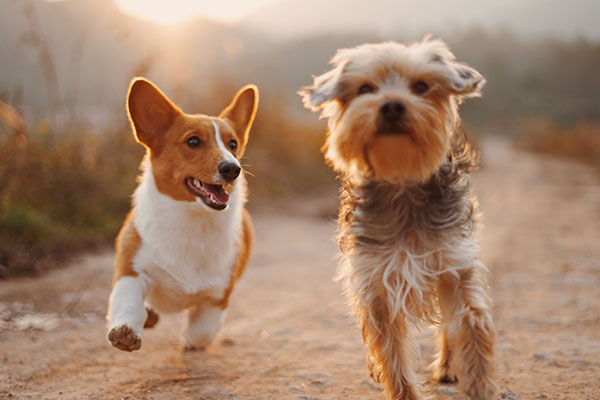At about 5 to 6 months, if you have further than one doggy, you may find that play becomes more aggressive and exhibits some nipping, growling, and other general displays of dominance. At 6 months old, your 6-month-old puppy dog is considered to be an adolescent. Be set for some teenage behaviors!
The Development Of A 6-Month-Old Puppy
Body
Utmost 6- month-old puppies are roughly 75 of their adult body weight. utmost puppies will gain or grow each week until they attain their adult size which occurs between 9 and 16 months of age. still, there’s a range of maturity between the different types. Small tykes develop briskly and reach their adult size and body weight more briskly than large and giant types of puppies.
Teething
After 6 months, the endless doggies erupt. endless premolars erupt at 4 to 6 months and the molars erupt at 5 to 7 months of age. utmost types will show all their endless teeth between the periods of 6 to 7 months of age. Although tykes this age have all their adult teeth and aren’t laboriously “ teething ”, biting may peak at this stage. Make sure they’ve safe and approved chew toys. This is a great age to be on a regular tooth brushing schedule as these are the teeth they will have for the rest of their life so it’s important to watch for them duly.
Senses
By 6 months of age, utmost tykes have a veritably keen sense of hail, vision, taste, and smell. At this age, tykes are learning to separate one canine( and mortal) smell from another.
Capability To Hold Urine
6- month-old puppies can generally hold their urine for about 7 hours. This means you’ll need to take them out at least every 7 hours if you anticipate them not having an accident. They should be suitable to sleep through the night without having to go out.
Intelligence
6- month-old puppies are in the morning of their nonage. They’re smart, curious, strong, willful, and veritably sportful. They also may take further pitfalls by eating effects that youngish puppies may not. It’s important to ensure that your 6-month-old puppy dog doesn’t have exposure to trash barrels, dirty clothes, and other objects he may want to eat.
Dexterity
Utmost puppies that are 6 months old are getting veritably strong and coordinated. They can generally rollick, play, cost, jump, and run with veritably good delicacy. This is a time they’ve lots of energy and some of the cost-type toys can be a good release.
Sleep
Puppies that are 6 months old sleep roughly 16 to 18 hours per day.
Puberty
Be apprehensive that by the time most puppies are 6 to 8 months of age, puberty has set in and unplanned gravidity is possible, so be ready to take preventives or consider spaying or neutering as soon as possible.
Physical Appearance & Hair Fleece
Your 6-month-old puppy dog will begin some changes from a puppy dog to an adult hair-coat. utmost puppies begin to exfoliate some of their puppy dog fleece. Get your canine used to being brushed as the shedding will get worse as they fully lose their puppy dog fleece. Your 6-month-old puppy dog will appear much more like a grown-up at this stage, starting to grow in height and length and fill out with developing muscle.

Things To Do This Month
Spay Or Castrate
As your 6-month-old puppy dog hits puberty, they may come sexually interested in other tykes and start marking, sinning, or humping Ask your warhorse about having your canine desexed or devitalized to help unwanted gravidity. Ask your warhorse for advice about when this should be done. Your 6-month-old puppy dog needs to be emotionally, socially, and mentally mature before being fixed.
Canine Training
You may have graduated from a 6-month-old puppy dog academy, but you’ll need to keep up with the training. However, it’s a good idea to seek professional help from a duly good canine coach or behaviorist, If you start to witness problem behaviors in your canine.
Tips On Best Ways To Raise Your 6-Month-Old Old Puppy
- Consider that jalopy training is for life
- Take him out at least every 7 hours
- Make sure he gets plenitude of exercise!
- Encounter and comb daily
- Encounter teeth diurnal
- Train
- Feed twice a day
- Switch out safe chew toys
- Don’t let your 6-month-old puppy dog chew on anything he can swallow
- Still, make sure he’s on precautionary!
- If he’s a threat for heartworm disease. Get your 6-month-old puppy dog desexed or fixed
- Give positive underpinning for work well done.
Mental Stimulation Is Key
Furnishing outlets for internal energy similar to advanced puppy dog training is just as important as outlets for physical energy. Try to exercise new training chops many times a day in 3- 5 nanosecond sessions. Educate a new behavior every week to keep the effects instigative!
Have your 6-month-old puppy dog ‘work’ for refections by feeding kibble or treats from a food-allocating toy. Your 6-month-old puppy is getting a better problem solver, so give him further grueling chew toys to show off his brainpower and burn some brume figuring them out.
How Much Exercise Does A 6–Month–Old Puppy Need
An energetic 6-month-old puppy dog will profit from a good half an hour’s walk a couple of times a day. Mental stimulation is particularly important in youthful tykes, so make time every day for training, playing, smelling, and learning. tykes love having the space to run around and have a good whiff – this is part of their natural behaviors. Take your canine to different places to give them a chance to witness new smells. Check it’s safe for them to be let off the lead, or use a long lead if you’re still perfecting your recall.
How Much Will My Puppy Grow After 6 Months
At around 6 months, your puppy dog’s growth rate will start to decelerate down. However, up until the age of two, If your canine is a large strain they will continue to grow. A lower strain may be close to their adult size by this age.





